
by Linda Rawson | Aug 6, 2025 | Artificial Intelligence, Federal Government Contracting
At DynaGrace Enterprises, we believe that clarity is the cornerstone of ethical contracting. As President, I’ve seen how vague language, misaligned expectations, and rushed scopes can derail even the most promising projects.
Technology moves fast. Contracts must move with intention. — Linda Rawson
Clarity in contracts means:
- Defining deliverables with precision
- Aligning scope with mission
- Embedding ethical boundaries and feedback loops
- Ensuring all parties understand their role in the system’s impact
We use the Soulprint Framework to guide our approach:
- We begin with intention
- We protect stakeholders through clear terms
- We reflect shared values in every clause
- We evolve agreements to meet real-world needs
- We tell stories that empower—not confuse
Why It Matters
In federal contracting, clarity isn’t just operational—it’s energetic. It sets the tone for collaboration, trust, and transformation.
Whether we’re building AI systems, deploying cloud solutions, or crafting public-facing platforms, our contracts must be as thoughtful as our technology.
A contract is a container. What we put inside it shapes the future. — Linda Rawson
Our Commitment
At DynaGrace, we don’t just sign contracts—we shape them. We work with agencies and partners to ensure every agreement is clear, conscious, and aligned with purpose.
Let’s lead with clarity. Let’s contract with care.
🔗 Learn more at https://dynagrace.com
Listen to the Podcast at: https://govcon-biz.com/episodes/
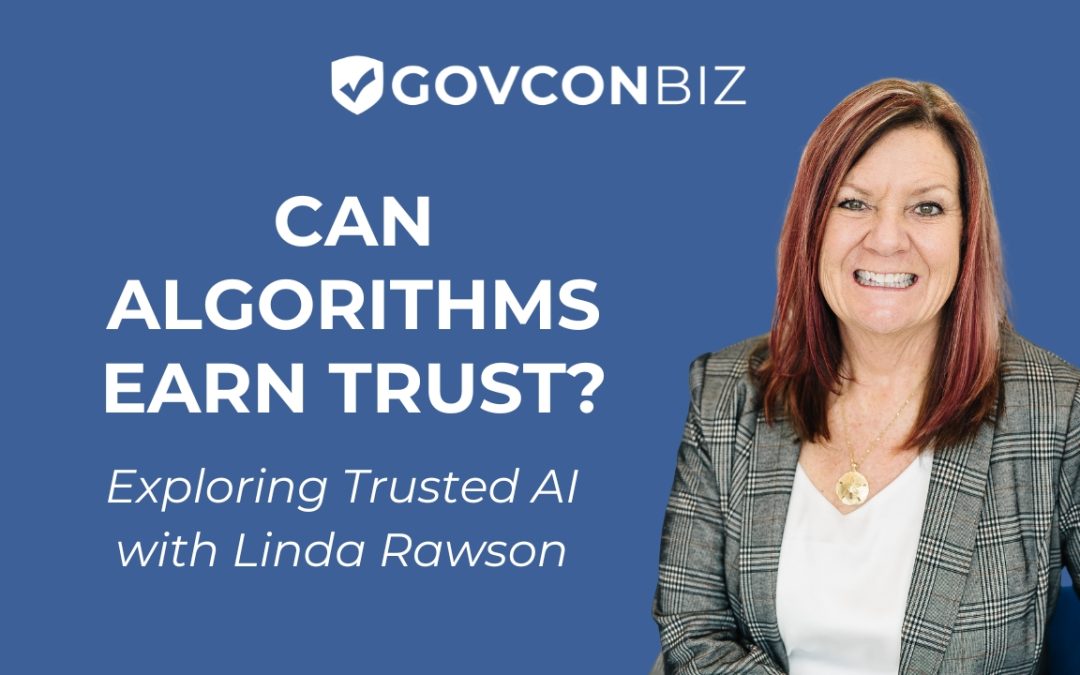
by Linda Rawson | Jul 29, 2025 | Artificial Intelligence
In a world increasingly shaped by artificial intelligence, one question echoes louder than ever:
Can algorithms earn our trust?
At DynaGrace Enterprises, we believe the answer lies not just in code, but in conscience—and our founder, Linda Rawson, is leading the charge.
As the voice behind the debut episode of GovConBiz, Linda dives deep into the soul of AI, exploring how ethics, clarity, and wisdom must guide the future of government technology. With a legacy of winning millions in federal contracts and a growing presence in the Trusted AI space, she’s uniquely positioned to bridge the gap between innovation and integrity.
Designing AI with Soul
Linda’s approach to AI isn’t just technical, it’s transformational. She introduces actionable principles for responsible AI development:
- Clarity: Systems must be understandable, not just functional.
- Empathy: Technology should reflect human values, not override them.
- Intentionality: Every algorithm must serve a purpose rooted in service.
- Accountability: Developers must own the impact of their creations.
These aren’t just ideals, they’re imperatives. And Linda is helping technologists, entrepreneurs, and government leaders see that ethical design isn’t a luxury; it’s a necessity.
From GovCon to Global Impact
At DynaGrace, we’re proud to support Linda’s mission to make AI trustworthy, transparent, and human-centered. Her insights are shaping not only how we build technology, but how we build trust, in systems, in institutions, and in each other.
Want to learn how to integrate ethics into your tech strategy or government proposal? Linda’s your guide. She’s not just asking the hard questions, she’s answering them with clarity and conviction.
Trusted AI is about earning, not demanding, confidence from the people it serves.
Read the article here ->https://govcon-biz.com/2025/07/29/can-algorithms-earn-trust/
Listen to the podcast on any of your favorite platforms -> https://govcon-biz.com/episodes/
Watch on YouTube -> https://youtu.be/csf0iL-VHPA
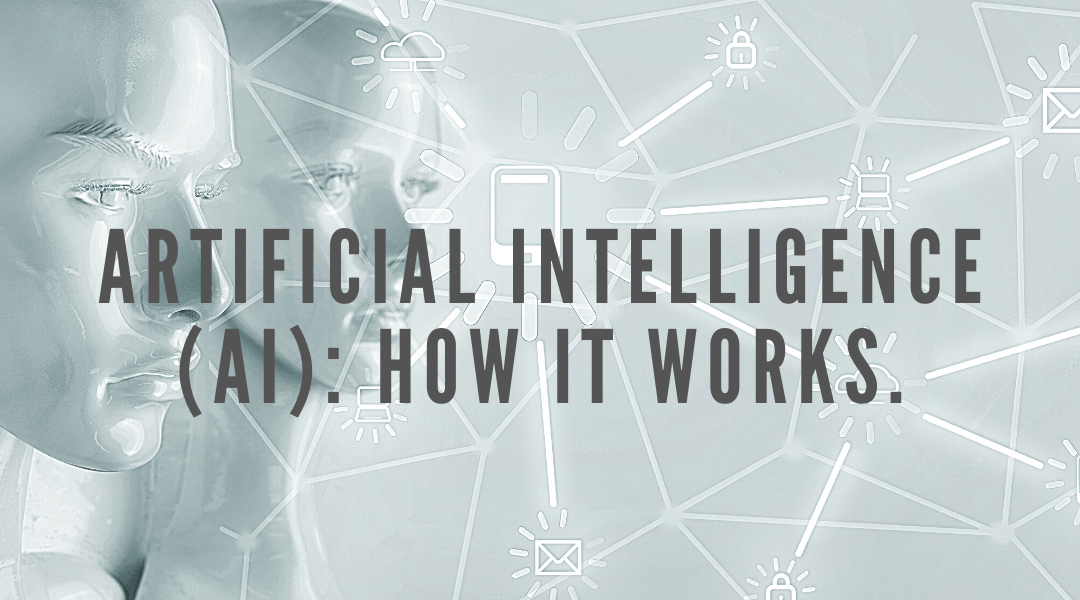
by Dr. Jane Fitzgerald | Jun 17, 2023 | Artificial Intelligence, Emerging Technology, General, Information Technology
What is Artificial Intelligence (AI)?
Artificial intelligence (AI) is a computer-controlled entity’s ability to perform cognitive tasks and respond flexibly to

Image Credit: Piqsels.com
its environment to increase the probability of achieving a specific goal. The program can learn from data, from experience, and can mimic actions similar to human beings. But it does not generally use biologically measurable methods.
AI describes the computer’s ability to execute tasks to accomplish the desired objectives. It also means that a computer can effectively reduce or even eliminate human activities.
Popular examples of chess, go, and dota intelligence demonstrates computers in certain areas and outperform human capabilities. Natural language processing (NLP) and machine learning algorithms are currently the most known fields for AI.
Types of AI
- Artificial General Intelligence (AGI)
- Artificial Narrow Intelligence (ANI)
- Artificial Super Intelligence (ASI)
What is Artificial General Intelligence (AGI)?
AGI is still a concept of theory, recognized as Ai with a human-level cognitive capacity in a broad range of fields, including language processing, image processing, computational functioning, reasoning, etc.
We’re quite a long way from AGI system development. The AGI program will need to involve thousands of tandem-working artificial narrow systems that interact with one another to mimic human thought. Also, in advanced computing systems and facilities such as Fujitsu’s K or IBM ‘s Watson, a single second of neural activity simulates within 40 minutes. It applies to immense complexity and interconnections between the human brain and the scale of the task of constructing an AGI with the current resources.
What is Artificial Narrow Intelligence (ANI)?
ANI is the most popular type of AI on the market now. Such AI systems are designed to solve a single problem and can perform one function very well. They have limited capabilities by design, such as recommending a product for e-commerce users or weather prediction. It is today’s only form of artificial intelligence. They can approach human functioning in particular situations and, even in many cases, surpass it. But only in highly controlled environments with a limited range of parameters.
What is Artificial Super Intelligence (ASI)?
Here we are almost into science fiction, but ASI alias as the logical development of AGI. An Artificial Super Intelligence system (ASI) could exceed all human capacities; this will involve decision-making, sound decisions, and even issues like improving the art and developing interpersonal ties.
When Artificial General Intelligence succeeds, AI systems could quickly boost their ability and push into fields that we could not foresee. While the distance between AGI and ASI is relatively narrow (some say just like a nanosecond because that is how quickly Artificial Intelligence will learn), the long path to AGI itself looks like a dream far into the future.

Image Credit: Wikimedia
What is the Purpose of AI?
Artificial Intelligence aims to aid human performance and help us make high-level decisions with far-reaching consequences. That’s the response from a technical standpoint. From a philosophical viewpoint, Artificial Intelligence can help humans lead more fulfilling lives free of hard labor and help manage the vast network of interconnected individuals, businesses, states, and nations to work in a manner that’s beneficial to all humanity.
Currently, Artificial Intelligence aims to simplify human effort and to help us make better choices by all the different tools and techniques that we have invented. Artificial intelligence, similarly marketed as our Last Innovation was a development that would create breakthrough technologies and services. It would also transform our way of life exponentially and eventually eradicate conflict, injustice, and human stress.
That’s all in the far future, though – we’re quite a long way from those kinds of outcomes. At present, the primary purpose of AI is to improve companies’ process efficiency, automate resource-intensive tasks, and produce business predictions based on hard data rather than good feelings. As with other technology, companies and government agencies must finance research and development expenses before they are available to laypeople every day.
The application of AI?
AI is used in different fields to provide insights into user behavior and to provide data-based recommendations. For example, the predictive search algorithm used by Google previous user data to predict what a user would type in the search bar next. Netflix uses past user data to decide what movie a user wants to see next, link the user to the app, and maximize watch time. Facebook uses previous users ‘ data to automatically suggest tagging your friends based on their facial characteristics in their images. AI is used in large organizations to simplify the life of an end-user. In general, the applications of artificial intelligence will come under the category of data processing, including:
- Data filtering and search optimization to give the most relevant results
- Logical chains for if-then reasoning serves to execute command strings based on parameters.
- Pattern detection to recognize essential trends for useful insights in large datasets.
- Applied probabilistic models to predict future results
Why does it matter?
The Internet-enabled global communication for all and impressively changed our way of working, living, and interacting. With process automation, AI is supposed to do the same; this will affect the consumer sphere, but it will also influence more repetitive business processes or simple decisions.
Some of the effects most discussed would be autonomous driving, but analysis, customer service, regulation, legal, and management are fields in which AI can improve productivity significantly. This cross-industry influence makes it critical that nearly everyone participates in AI.
Where are we today?
Even though AI has been around for over 50 years, we are still in the early stages. Factors such as processing power, worldwide networking, and cloud technology have just begun to open up artificial intelligence opportunities.
With the large enterprise data sets available – massive data hype, the three main phases of artificial intelligence segments into pattern recognition. The second phase currently involves commercializing deep learning algorithms, which enable real learning systems through neuronal networks. There are still a few years of abstract and reasoning intelligence, but its development is now beginning.
First experiments already were undertaken, but business applications currently focus on phase two-giving technology plenty of room for performance and adoption.

by Anika D | Mar 11, 2023 | Artificial Intelligence
Did you know the global AI market is valued at over $136 billion? With such great updates and amazing services, AI adoption is at an all-time high. But, what are the practices which make an enterprise use it to the fullest? Well, leveraging the features of AI makes it a worthy investment. So, here are 5 best practices to scale AI in the enterprise.
Let’s have a look!
AI House Team is a Good Idea
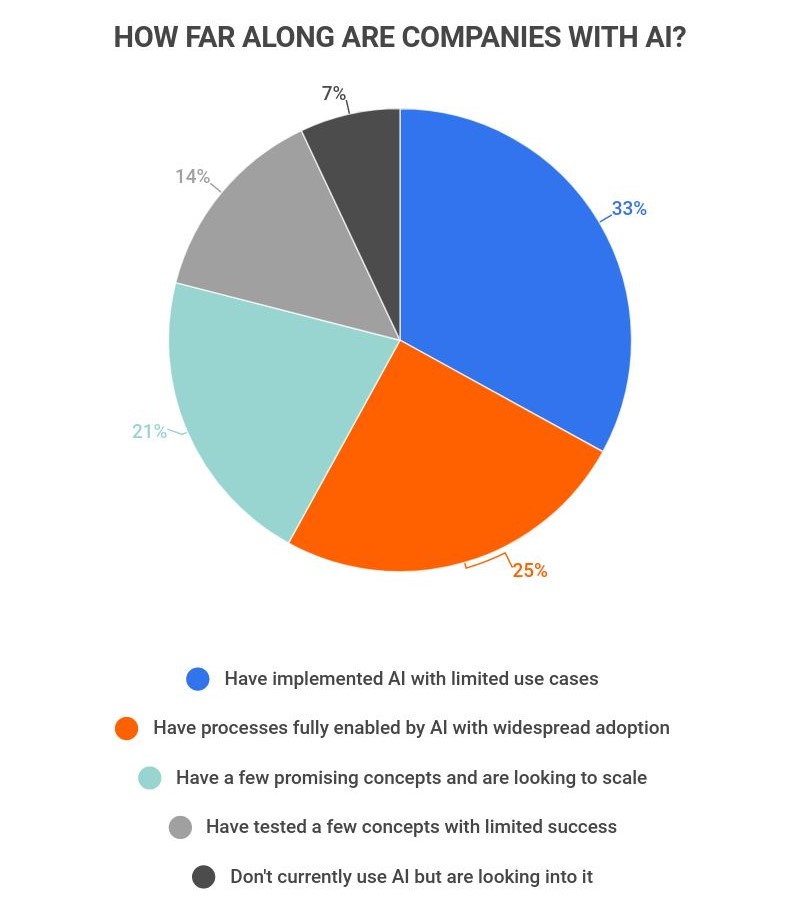
Source
Artificial intelligence is vast and so are its benefits. If you want to scale AI to the next level you must think about creating an in-house use team. This will help you manage the AI functions and their benefits.
Moreover, the team will be more focused, and dedicated and help the enterprise with anything. Also, there are many top career profiles in the AI field like machine learning engineers, data engineers, data scientists, and AI product managers. This AI team will revolutionize all the touch points which can be altered with the help of AI.
Train Your Employees
Yes, you have an AI team or maybe you don’t have one, whatever the case is, training your employees to simplify and explain the use and benefits of AI is crucial. You can conduct seminars, presentations, and classes and ask an in-house AI team or another team to train employees.
If every employee knows the basics and how it is to use it in their department they can work more smartly. Therefore, to scale AI in an enterprise you have to gradually build awareness through training.
Collaboration
Collaboration is a very big factor to scale AI in the enterprise. For example, all the departments, AI teams, or third parties can come together to present their unique ideas. This will help the organization come up with unique ideas to incorporate AI into the enterprise.
Moreover, the mix of skills, ideas, and perspectives, will help the enterprise implement and benefit from AI. adopting AI and not creating awareness among your employees and not discussing is simply not using the technology to the fullest. So, build a healthy collaboration.
Invest in Data

Source
The AI trends to watch in 2023 focus on data and creating amazing applications. Therefore, You must streamline your enterprise data. Data is the lifeblood of AI and ML models and therefore it’s important to arrange and organize the data.
Some of the data you may have to deal with are:
- Data Silos: In this, the important data are only accessible to some departments of any enterprise. This helps the company to protect the data and work on AI.
- Incompatible data: This is raw data that is sourced from various points. It must be arranged before use.
- Inaccurate data: This is bulk data which is mostly not required. You must assess and get rid of it.
A strong data management system will help you focus on important data which is accessible only to a few people. This makes the AI strategy quick, smart, and beneficial.
Bottom Line
Do you know 42% of companies are exploring AI for its implementation in the future and it’s the future? So, investing in AI to revolutionize sectors can be profitable. But, you have to take smart steps to scale AI in the enterprise for maximum benefits.
![Top 9 Career Profiles in Artificial Intelligence [Highly-Paid]](https://d1kq12zqkovx7v.cloudfront.net/wp-content/uploads/2023/02/hitesh-choudhary-t1PaIbMTJIM-unsplash.jpg)
by Anika D | Feb 25, 2023 | Artificial Intelligence
The global Artificial Intelligence market is estimated at over $136 billion and rapidly changes how we work and live. As the field matures, AI jobs’ variety, quantity, and complexity will rise. It will open opportunities for a range of professionals, such as junior and senior researchers, statisticians, practitioners, experimental scientists, etc.
Lucrative job opportunities are also expanding along with the demand for AI experts. Here are the top nine Artificial Intelligence career paths that are making headlines in 2023.

Source
Computer Vision Engineer
Computer vision engineers mix machine learning and computer vision techniques to assist computers in understanding and interpreting visual data. They work closely with other programmers to develop systems that recognize and classify images from movies, photos, and other visual data.
This tech expert uses computer vision research to support the automation of predictive decision-making through visuals. They closely collaborate with object-oriented software to handle the processing and analysis of large data populations.
Data Scientists
For a variety of purposes, data scientists gather data, examine it, and draw conclusions. They employ various technological tools, procedures, and algorithms to extract knowledge from data and find significant trends. This could be as simple as spotting abnormalities in time-series data or as complicated as making predictions and giving advice.
The following are the main requirements for a data scientist:
- Advanced degree in maths, computer science, statistics, etc.
- Statistical analysis and the unorganized data comprehension
- Having knowledge of platforms like Hadoop and Amazon S3 for the cloud
- Abilities in programming languages like Python, Perl, Scala, and SQL.
- Working experience on Hadoop, Spark, MapReduce, Pig, and Hive.

Source
National Language Processing Engineer
AI engineers focusing on spoken and written human expression are known as natural language processing (NLP) specialists. NLP technology is used by engineers who work on voice assistants, speech detection, document processing, etc.
An NLP engineer should have expertise in sentiment analysis, n-grams, modeling, general statistical analysis, computational abilities, data structures, modeling, and sentiment analysis, among other things. It might be advantageous to have prior knowledge of Python, ElasticSearch, web programming, etc.
Robotics Engineer
When industrial robots became prevalent in the 1950s, the robotics engineer was possibly one of the first jobs in artificial intelligence. From English teaching to assembly lines, robotics has gone a long way. Robotic-aided surgery is used in healthcare.
Robotic humans are being created to serve as personal aides. All of this and more is what a robotics expert does. AI-powered robots are created and maintained by robotics experts. For these positions, organizations generally require advanced degrees or certifications in engineering, computer science, or a related field.
Robotics experts may be required to know CAD/CAM, 2D/3D vision systems, the Internet of Things (IoT), as well as machine learning and Artificial Intelligence.

Source
Machine Learning Engineer
Do you know that Artificial Intelligence related job posting, especially ML, has increased by over 100% on top career websites? It makes machine learning one of the top three sought-after skills by employers. A Machine Learning Engineer uses big data tools and programming frameworks to develop data science models.
These models are production-ready, scalable, and capable of handling gigabytes of real-time data. The best candidate for this profile is one with expertise in deep learning, neural networks, cloud applications, and Java, Python, and Scala programming is an added advantage. Understanding software development UI tools like Eclipse and IntelliJ is also beneficial. Apple, Facebook, Twitter, etc., are some of the highest-paying AI companies in the world.
Artificial Intelligence Research Scientist
One of the AI jobs with the highest academic demands is that of the research scientist. They pose original, thought-provoking queries for AI to respond to. They are specialists in various fields related to artificial Intelligence, such as statistics, machine learning, deep learning, and mathematics.
Companies are looking to hire research scientists to anticipate them to be well-versed in these fields, as well as in graphical models, reinforcement learning, and natural language processing. Benchmarking expertise and familiarity with the newest technology of 2022, computing, networked computing, machine learning, and artificial Intelligence are preferred.
Business Intelligence Developer
Business intelligence (BI) developers analyze intricate internal and external data to find trends. For instance, in a business that provides financial services, this could be someone who keeps track of stock market statistics to aid in investment selection. They also sometimes work closely with the cybersecurity teams to understand how AI revolutionizes workplace safety.
This might be someone who monitors sales trends for a product business to help with distribution planning. Business intelligence engineers don’t produce reports, in contrast to data analysts. For business users, dashboards usually design, model, and maintain complicated data in highly accessible cloud-based data platforms.

Source
Big Data Architect / Engineer
Big data engineers and architects create ecosystems that allow efficient communication between various business verticals and technologies. They are usually expected to work on designing and developing big data projects on Hadoop and Spark systems. This position may feel more involved than that of a data scientist.
Professionals with a Ph.D. in computer science or mathematics areas are preferred by most employers. However, because this position is more practical than a research scientist, practical expertise is necessary for a strong placement.
Big data experts require programming knowledge in C++, Java, Python, or Scala. They must also know about data transfer, visualization, and mining. With an average annual salary of $1,66,575, big data analysts are among the highest-paid positions in AI.
Software Engineer
Software engineers create Artificial Intelligence software. They combine development activities such as writing code, continuous integration, quality control, API management, etc. They also create and manage the software used by architects and data scientists. These tech professionals are expected to stay updated with the latest developments in AI technology.
Software engineering and artificial intelligence expertise are prerequisites for an AI software developer. In addition to statistical and analytical abilities, they must have excellent computer skills.
A degree in engineering, computer science, or statistics is usually required by employers. AI or data science certifications can also help you get hired as an AI software developer.
Bottom Line
So, it was all about the top nine AI career profiles expected to enjoy an impressive demand in 2023. Many top international companies look forward to hiring dynamic AI professionals on handsome pay packages. Having a good knowledge of the types of AI and its uses can be an added advantage for the aspirants.
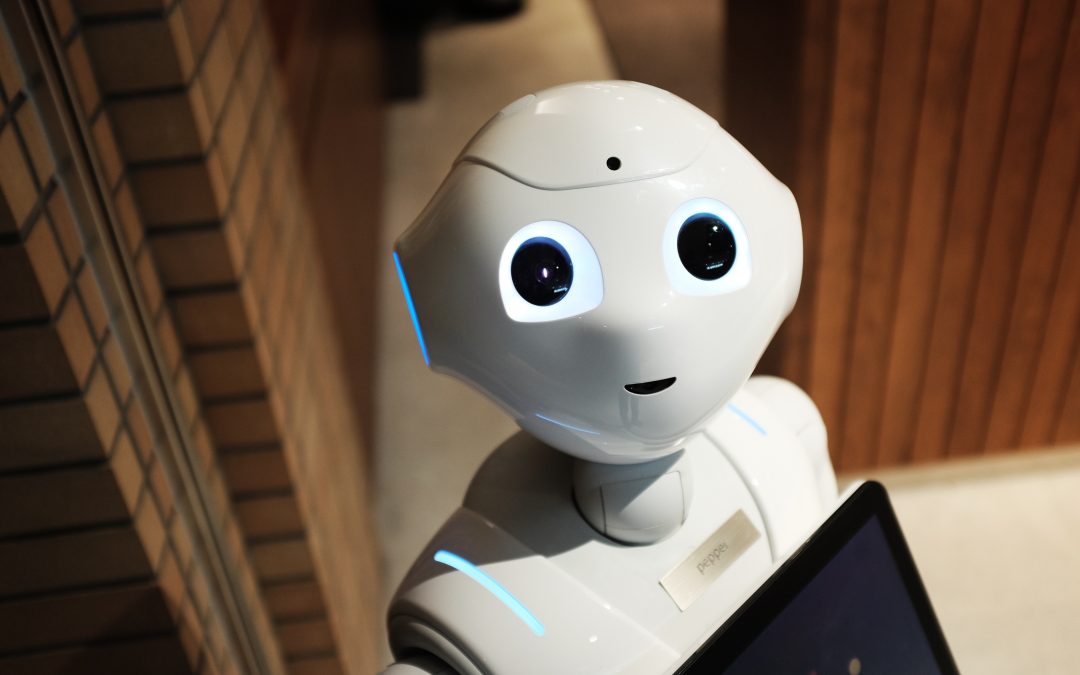
by Anika D | Feb 10, 2023 | Artificial Intelligence
Artificial Intelligence has become a significant part of today’s tech world. The market for AI products has seen swift growth for several years, and 2023 wouldn’t be an exception. At this pace, we’re likely to witness the momentum of new AI-powered technologies in several domains, including education.
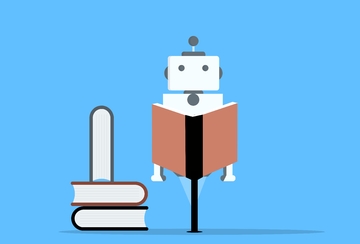
Source
New AI trends can help students to learn with flexibility. It can transform the education industry and ensure a great classroom experience in the coming time. Besides online education, it has the potential to enhance the offline learning experience too.
Let’s understand more about the use of AI in the educational landscape:
Automation of Administrative Tasks
Artificial Intelligence can ease administrative tasks like attendance tracking, making progress reports, and giving scores to quizzes. It can automate these tasks and make things convenient for educators. As AI can handle these workloads of teachers/educators, it can work on crucial aspects of education for the betterment of students.
Besides that, as everything will be automated by AI, teachers can sigh relief at efficient outcomes. This means they can stay assured of perfect grading, accurate progress reports, or attendance tracking.
Personalized Learning
One of the greatest benefits of AI in today’s education is offering personalized learning to students. It’s high time that educational institutes understand the need for flexible learning. Every student, whether younger or older, learns at their own pace. While some are absolute masterminds, who can grasp things in one go, for others, things aren’t that easy. They take time to learn and clear their concepts.
As AI encourages personalized learning, students can benefit from the same. They can learn things as they want without struggling to catch up. AI can help to tailor new programs as per students’ abilities, so they can get the best benefits from the same. This can also be useful for teachers, as it’s not always possible for them to give equal attention to their students.
AI Chatbots
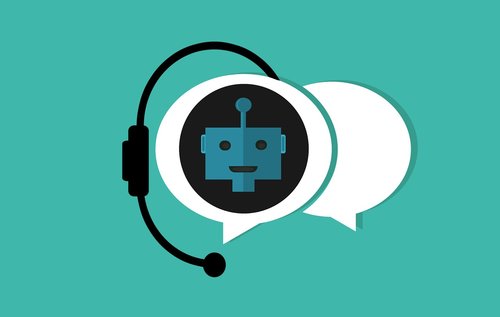
Source
Artificial Intelligence chatbots have eased things for many businesses, and their role in the education industry is equally useful. In online educational platforms, AI chatbots can ensure round-the-clock availability for students to learn despite the place and time. Students will be able to get the latest updates about new courses or programs in a hassle-free manner.
Not just that, Artificial Intelligence bots will ensure flexibility for the students for a smart learning experience. As AI bots will handle everything for students, teachers will be more dedicated to the crucial part, that is, taking lectures and clearing concepts. It’ll save them time/effort from explaining everything to students and focus more on their learning.
Early Development
Students who are young and still in their early development stage require extra surveillance from educators. They must get the best learning experience and a better grasp of the real world. Fortunately, in this case, AI can help too.
Progressive technology can ensure AI-powered tools and technologies for young children, especially the ones under 6. It can encourage the production of virtual assistants or interactive programs to create educational activities for these children. With these intelligent AI-powered programs, children can learn, engage, conversate, and prepare to be a part of the real world.
Improved Writing Ability
Writing is an important aspect of learning that most AI programs can help with. In today’s market, you’ll see various AI-oriented tools like Grammarly and Hemmingway that have been assisting students and improving their writing ability. It works by scoring the student write-ups based on their grammar, sentence construction, readability, error,s, etc., so students can understand their progress.
Additionally, software like Grammarly also has plagiarism checkers to identify whether or not the content is stolen/plagiarized from another source. This precise feedback and scoring ensure students can write journals, essays, etc., as seamlessly as they can.
In-depth Exploration
With other newest technologies like AR and VR, AI can help students with an in-depth exploration of concepts. VR, for example, can help medical students and aviation learners to grasp practical things easily.
It can help a group of novice pilots to practice in a virtual platform and understand the do’s and don’ts of flying. Whether it’s turbulence or the function of buttons/levers in an airplane, it’ll help them to understand everything easily.
Similarly, medical students can perform surgeries and understand disease progression through VR and AR technologies. This form of learning is way more effective than the traditional textbooks, that’s just limited to images and plain texts for learning concepts.
Takeaway
Gone are the days when education was limited to chalk-and-talk methods. Now, both teachers and students are interested in immersive learning. Thankfully, AI does this job perfectly.
From personalized learning to automation, Artificial Intelligence is changing the educational landscape for good. With AI-powered technologies, educators and students can understand the crucial aspects of learning for the best outcomes.








![Top 9 Career Profiles in Artificial Intelligence [Highly-Paid]](https://d1kq12zqkovx7v.cloudfront.net/wp-content/uploads/2023/02/hitesh-choudhary-t1PaIbMTJIM-unsplash.jpg)






